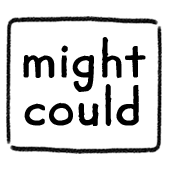NOTE: This is Part 2 of a 5-part series. Read more with Part 1 (intro), Part 2 (anger), Part 3 (fear), Part 4 (sadness), or Part 5 (hope).

As I mentioned in the intro to this series, I’m exploring and analyzing how I use drawing to experience and process my emotions. I’m focusing on three of the six basic emotions laid out by psychologist Paul Ekman: Anger, Fear, and Sadness. And today we’re diving straight in with Anger.

Anger: How We Feel It
According to Paul Ekman,
“we get angry when we are blocked from pursuing a goal and/or treated unfairly.”
Now before you go skipping or skimming this essay because you think you’re “not an angry person”, remember that all emotions are felt in different intensities. The basic emotion of anger can be broken down into emotional states that, as the psychologist Charles Spielberger says, can range “from mild irritation or annoyance to fury and rage.” Perhaps when you first thought of anger, you visualized rage and that doesn’t resonate with you. Fair enough, but all of us get annoyed and irritated, probably on a daily basis. So I think dealing with anger is something that’s relevant to everyone.
Anger almost always involves another person besides just us—we believe someone else has thrust this unfair situation onto us, someone else is to blame. The researcher Brené Brown also describes anger as an “action emotion—we want to do something when we feel it.”
Part of the reason we’re hesitant to admit we get angry sometimes is that anger is uncomfortable. Brené Brown writes in her book, Braving the Wilderness,
“Sometimes owning our pain and bearing witness to struggle means getting angry. When we deny ourselves the right to be angry, we deny our pain. There are a lot of coded shame messages in the rhetoric of “Why so hostile?” “Don’t get hysterical,” “I’m sensing so much anger!” and “Don’t take it so personally.” All of these responses are normally code for Your emotion or opinion is making me uncomfortable.”
Brown also compares anger to an “indicator light in our car [that] tells us to pull over and check things out”. And that’s where we get into the artmaking part of this. Anger is a normal, natural emotion and there is nothing inherently wrong with feeling angry. We all do from time to time. So instead of ignoring or suppressing our anger, we can start seeing it as an indicator that we need to draw.
We need to allow ourselves to experience the anger and listen to what it is trying to tell us. Because Anger is an “action emotion”, we feel the urge to do something about it. We want to argue, insult, call names, maybe even scream out loud. We want to be passive-aggressive, brood alone, or try to just push it down.
Drawing through the anger helps us feel and experience the emotion in a safe, healthy, and helpful way. Drawing our anger cools us down so we are more present, aware, and able to choose how we want to react.

